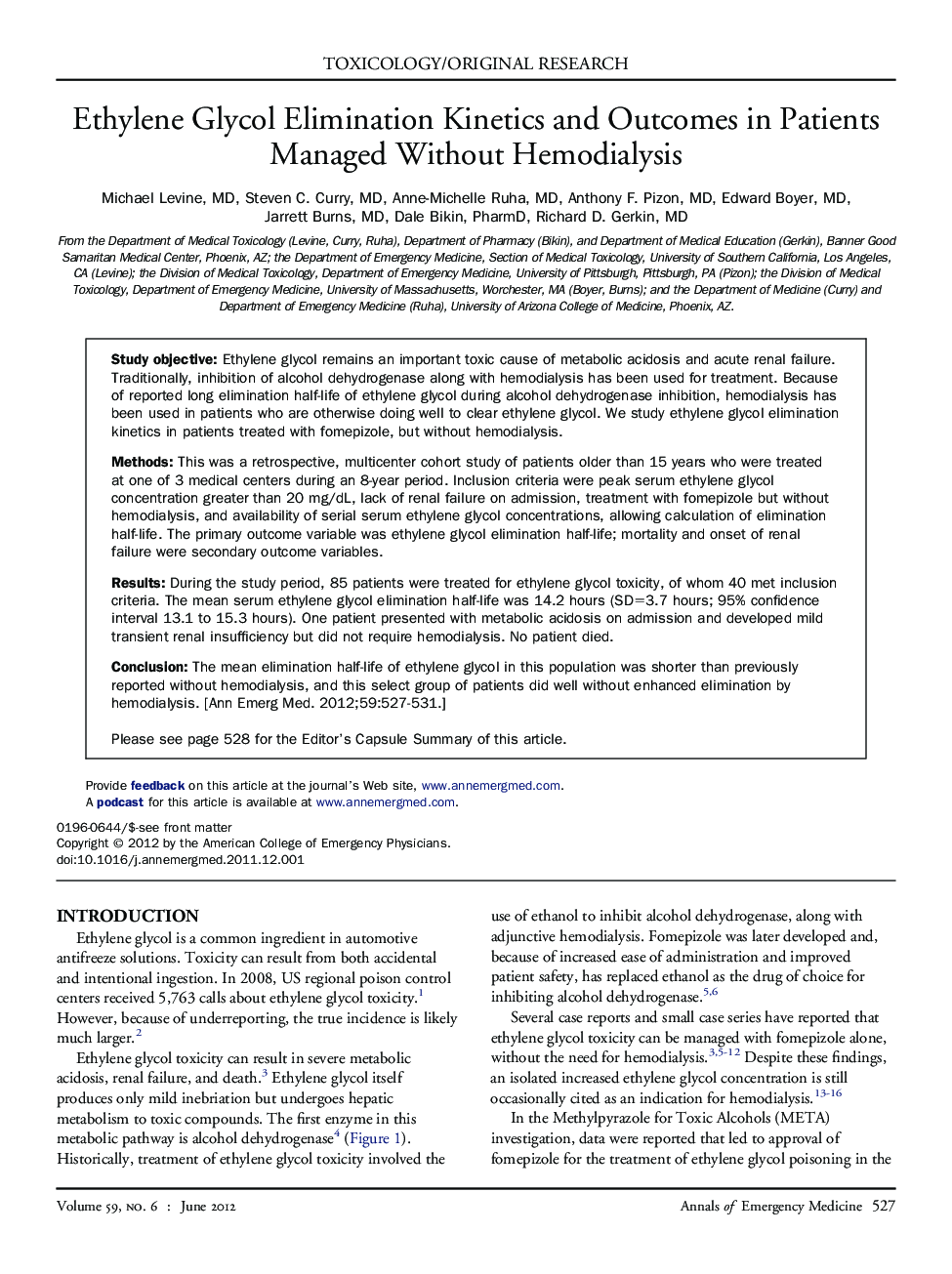| Article ID | Journal | Published Year | Pages | File Type |
|---|---|---|---|---|
| 3230829 | Annals of Emergency Medicine | 2012 | 5 Pages |
Study objectiveEthylene glycol remains an important toxic cause of metabolic acidosis and acute renal failure. Traditionally, inhibition of alcohol dehydrogenase along with hemodialysis has been used for treatment. Because of reported long elimination half-life of ethylene glycol during alcohol dehydrogenase inhibition, hemodialysis has been used in patients who are otherwise doing well to clear ethylene glycol. We study ethylene glycol elimination kinetics in patients treated with fomepizole, but without hemodialysis.MethodsThis was a retrospective, multicenter cohort study of patients older than 15 years who were treated at one of 3 medical centers during an 8-year period. Inclusion criteria were peak serum ethylene glycol concentration greater than 20 mg/dL, lack of renal failure on admission, treatment with fomepizole but without hemodialysis, and availability of serial serum ethylene glycol concentrations, allowing calculation of elimination half-life. The primary outcome variable was ethylene glycol elimination half-life; mortality and onset of renal failure were secondary outcome variables.ResultsDuring the study period, 85 patients were treated for ethylene glycol toxicity, of whom 40 met inclusion criteria. The mean serum ethylene glycol elimination half-life was 14.2 hours (SD=3.7 hours; 95% confidence interval 13.1 to 15.3 hours). One patient presented with metabolic acidosis on admission and developed mild transient renal insufficiency but did not require hemodialysis. No patient died.ConclusionThe mean elimination half-life of ethylene glycol in this population was shorter than previously reported without hemodialysis, and this select group of patients did well without enhanced elimination by hemodialysis.
